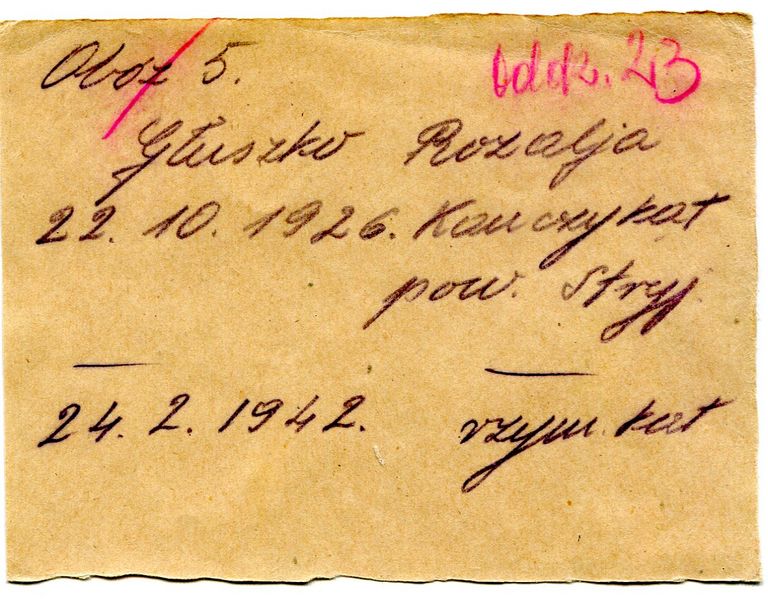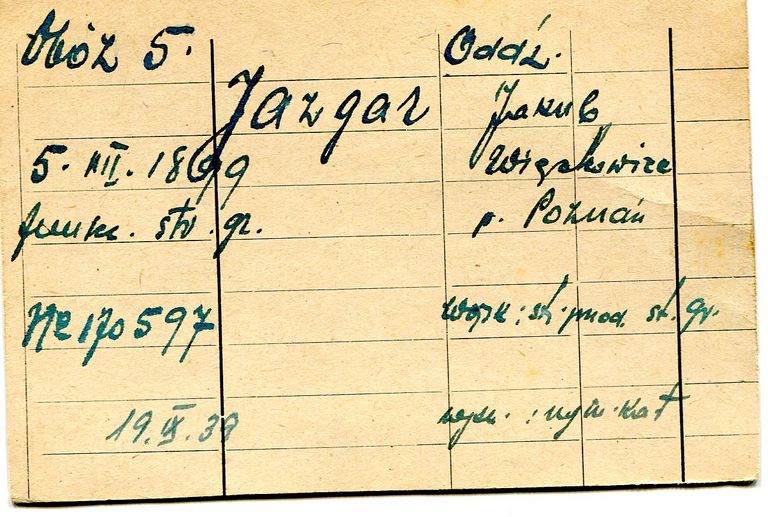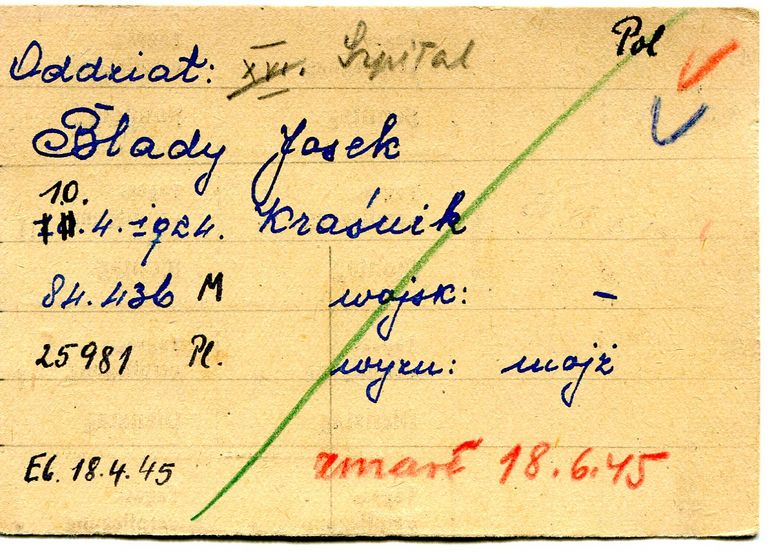Page of
Page/
- Reference
- Intro


Shortly after the end of the war, a DP camp was set up in Ebensee in Upper Austria. Several thousand, almost exclusively Polish DPs were housed here and were registered in a card index by the camp administration.
The provisional cards explained here, which date back to the camp's early days, contain personal details of the DPs living in the camp, including dates and places of birth, religious denominations, military ranks and information on periods of imprisonment in German concentration camps. It was also noted in which sections of the camp the DPs were housed.
Shortly after the end of the war, a DP camp was set up in Ebensee in Upper Austria. Several thousand, almost exclusively Polish DPs were housed here and were registered in a card index by the camp administration.
The provisional cards explained here, which date back to the camp's early days, contain personal details of the DPs living in the camp, including dates and places of birth, religious denominations, military ranks and information on periods of imprisonment in German concentration camps. It was also noted in which sections of the camp the DPs were housed.
Questions and answers
-
Where was the document used and who created it?
Shortly after the liberation of the subcamp (main camp: Mauthausen concentration camp) and the forced labour camps in Ebensee, Polish survivors founded a committee in May 1945 whose task was to look after Polish survivors, find deported relatives and, if necessary, organise their return to Poland. The "Polish Committee" was also responsible for the administration of the DP camp in Ebensee under the supervision of the United Nations Relief and Rehabilitation Administration (UNRRA). The committee kept a register of the people housed in the camp.
- When was the document used?
The DP camp existed until November 1946, when most of the Polish DPs from Ebensee had returned home or been transferred to other DP camps.
The registration cards explained here, which were mainly handwritten, were created in the immediate development phase of the camp between May and August 1945.
In 2018, these and another, later card index of the "Polish Committee" were found in the attic of an old salt works building in Ebensee and handed over to the local Zeitgeschichte Museum. As part of joint projects between the Zeitgeschichte Museum and the Ebensee Concentration Camp Memorial, both card indexes were digitised and analysed. In 2020, scans of the files and the results of the analyses were made available to the Arolsen Archives.
- What was the document used for?
In mid-May 1945, there were tens of thousands of surviving concentration camp prisoners, forced labourers and prisoners of war in the Ebensee area who needed to be housed, cared for and given medical treatment. While the majority of the survivors left Ebensee in the first weeks after liberation with the help of national organisations, the International Red Cross (IRC) or independently, several thousand Polish nationals remained behind.
The Allies had already decided at the Yalta Conference that after the end of the war, Soviet DPs should initially be prioritised for repatriation to their countries of origin. This meant that the transport routes and means of transport to the east were closed to Polish DPs in mid-1945. In addition, some Polish DPs refused to return to what was now communist Poland for political reasons or because they feared being condemned as collaborators upon their return. The nationality of many Polish DPs was also unclear. The war had shifted the borders in Central and Eastern Europe. After 1918, Poland had still encompassed a large territory in the East that reached almost to Minsk, including parts of what is today western Ukraine around Lviv and Ternopil. These areas fell under Soviet rule in 1945. After the war, many DPs who had been born in formerly Polish towns were able to define themselves as Polish, Soviet, Ukrainian or stateless. For many Polish DPs, emigration was for a long time not a realistic option for leaving the DP camps due to strict entry quotas in most countries. Only the "Polish Repatriation Drive" by the Allied military government and the Polish government ensured that the number of Polish DPs in the camps decreased significantly by the end of 1946.
The so-called "Polish Committee" was formed in Ebensee in May 1945 to look after the Polish DPs stranded there. Under the supervision of the United Nations Relief and Rehabilitation Administration (UNRRA), this committee was responsible, among other things, for the administration of the DP camp and for the precise registration of the people accommodated there. All residents were recorded in lists on a weekly basis. The "Polish Committee" also kept a card index - initially using makeshift scraps of paper and cardboard that they had cut themselves, later on index card forms provided by the US military government and the Polish Centre Ebensee ("Ośrodek Polski Ebensee"). The card index of the "Polish Committee" was not only intended to document who was in the camp and in which part of the camp a person was accommodated. The card index also contained information on military ranks in the Polish army as well as periods spent in concentration camps, as prisoners of war or forced labour. These details were important for the DP status and supply of the camp inmates, among other things. The card index may also have been used to search for relatives and organise repatriations to Poland.
- How common is the document?
In 2020, the Arolsen Archives were provided with the presumably complete card indexes of the "Polish Committee" in Ebensee by the Zeitgeschichte Museum Ebensee. The Arolsen Archives' collection 7.11.2 contain scans of a total of 2,939 index cards from the early stage of the Ebensee DP camp.
- What should be considered when working with the document?
It has not yet been possible to clarify what the notations "Cat. A" to "Cat. D" on some cards mean.
If you have any further information about this document, we would be pleased to receive feedback at eguide@arolsen-archives.org. The document descriptions in the e-Guide are regularly expanded - and the best way to do this is by pooling knowledge.
Help for documents
About the scan of this document <br> Markings on scan <br> Questions and answers about the document <br> More sample cards <br> Variants of the document


